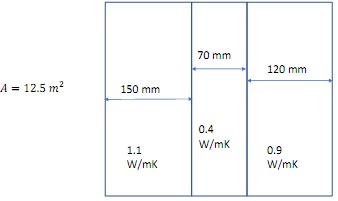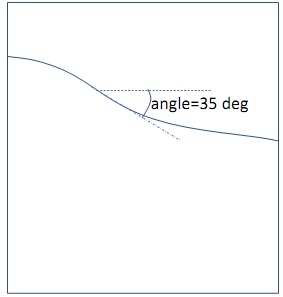Reference no: EM133102216
Question 1:
Consider a concrete wall with a thickness of 0.3 m, and thermal conductivity 1.1 W/mK. The wall is 2.9 m high and 4.2 m wide. Determine the heat transfer rate is the inside temperature is 25C and the external temperature is 7C.
a) Determine the heat transfer rate for an inside temperature of 25 C, and an external temperature of 7 C;
b) Determine a new value of the material thermal conductivity that we need in order to decrease the heat transfer rate by
the 25%;
c) Using the new value of the thermal conductivity obtained in point b), determine the external temperature corresponding to the heat transfer rate found in point a), for the same internal temperature (25 C);
Question 2:
Consider a composite wall made of three layers, with thicknesses and surface area A indicated below. thermal conductivity 1.1 W/mK.
a) Determine the heat transfer rate for an inside temperature of 25 C, and an external temperature of 7 C;
b) Determine a new value of the thermal conductivity for any of the three layers, in order to have a reduction of the heat transfer rate of 20%.

Question 3:
Consider a an instantaneous trend of the temperature within a wall as sketched below (assuming unsteady conditions). The thermal conductivity of the material is 1.1 W/mK.
a) Determine the heat flux at the point of maximum temperature gradient, whose angle is shown below.
